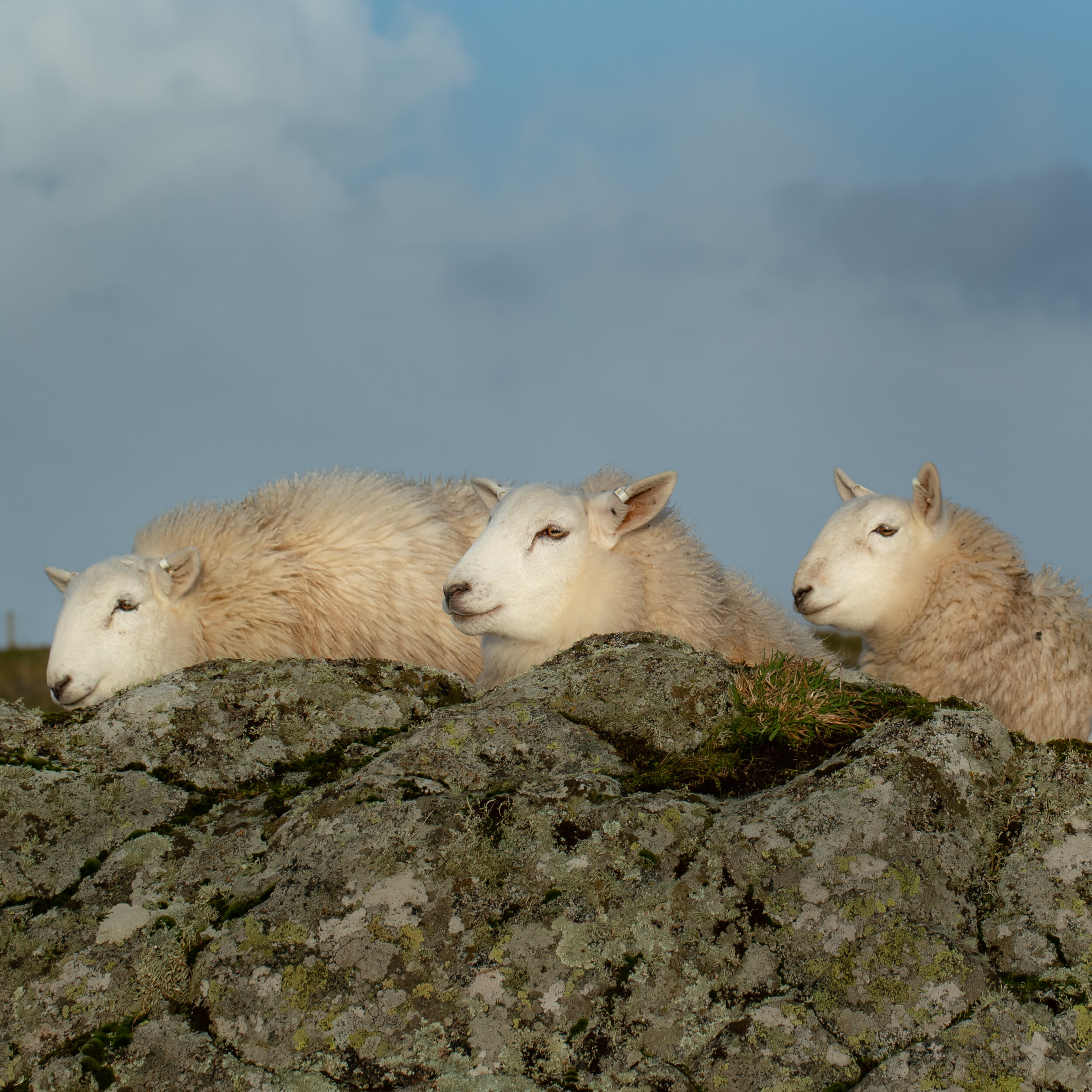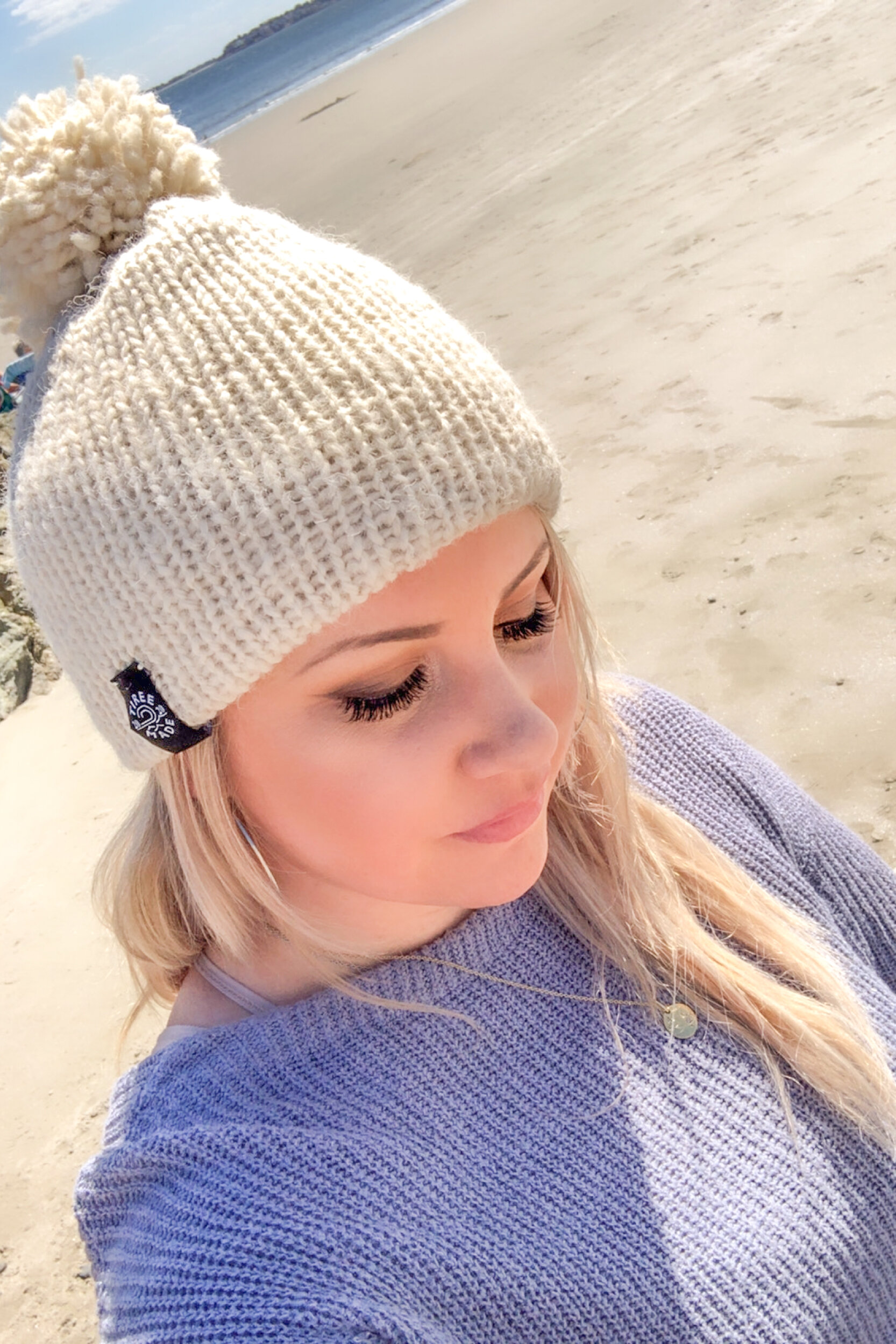Wool Clothing: The Health Benefits Of Wearing Wool And What It Could Do For You
Wool is renowned for its warmth, but also for the myth that it’s itchy. Passed down through generations, this myth has been allowed to grow and distort – and may have encouraged people to increase their consumptions of synthetic and polyester clothing which, despite their many uses, we feel cannot match the merits of wool.
The natural health benefits of wearing wool are said to be massive. Not only is it very warm, I’ve learnt it can also improve my sleep, help with skin conditions, has antibacterial properties and is suggested to help with asthma. I feel it’s the kindest of fibres to our bodies, and the furthest from the ‘itchy’ myth you could possibly imagine. Self-care is one of the most talked about topics of the decade, but anyone passing over woollen clothing and bedding could be missing a trick. Wool is the new mud-mask and it’s here to stay.
The list of the benefits of wool seems endless, not just for health but in other aspects of life. Just a few that come to mind instantly are:
Naturally resistant to water.
Wool is biodegradable, which is much kinder to the earth, compared to some synthetic materials. Wool decomposes at a much quicker rate.
As a renewable resource, wool is incredibly eco-friendly.
It is easy to clean and, I can guarantee, it has been much dirtier on the back of a sheep than anything you could do with it. Easy care, and long life.
Odour resistance and bacterial resistance.
It is anti-wrinkle and returns to its natural shape.
Wool is breathable and regulates your temperature and moisture incredibly effectively.
The pull of mountain and van life means I often spend a lot of time wearing wool. There’s nothing quite like waking up to the Scottish Highlands on your doorstep, and nothing quite as cold as wriggling out of your sleeping bag at 4AM to use the toilet in the great outdoors. In my experience you’ll never be more thankful of a pair of woollen pyjamas, a fluffy bobble hat and a big woolly jumper than when you’re waiting for the stove to heat up a brew in -2 temperatures. (The hat can be particularly handy for warming up frozen fingers and toes in the night too.)
Knowing a little about wool and having relied on it on many an adventure, I was intrigued by some of the benefits and how they could greater impact our lives - not just as an environmental and sustainable solution to clothing, but also on an individual basis. Wool has a multitude of qualities that make it so useful, but it has only been recently that scientific research has been developed to further our understanding of just how beneficial it can be.
Wool Helps With Sleeping
Believe it or not, research by the University of Sydney suggests that sleeping in woollen pyjamas can help you add 15 minutes to your nightly snooze. Participants wearing woollen pyjamas in the study also fell asleep on average 10 minutes before their cotton and polyester wearing counterparts.
The interior structure of wool fibres allows it to wick water away from the body much more effectively than cotton and polyester. Wool is full of high sulphur proteins that attract and absorb water molecules to the extent that wool can absorb 30% of its weight in water and still feel dry.
But why would this help you fall asleep?
Wool is naturally very good at controlling body temperature. Because of its high protein properties, it can ensure a cool enough night in the summer that you will sleep soundly. In the winter, the tiny air pockets that fill the woollen fibre act as a natural insulator. No matter what the weather, or the time of year, wool will help you get to that perfect temperature all adding to you achieving a great night’s sleep.
A study conducted by the University of Wales measured the effects of fibres on the sleep of human subjects. They found that not only did wool keep their skin drier, but it also resulted in lower heart rates of the wool using participants.
While not conclusive, this could suggest that not only do those of us that sleep in wool pyjamas sleep for longer, we also get a night of much deeper sleep too.
Sleep is an integral part of being healthy. I’ve always been an early riser, but if I don’t ensure at least 7 hours sleep then I can’t function the next day – and that’s at the very bottom end of the recommended nightly amount. Research suggests that adults between the ages of 18-64 should be averaging 7-9 hours of sleep every 24 hours.
Life can be busy, and sometimes it is hard to turn your brain off at the end of a day – but not getting enough sleep for a prolonged period of time can result in a series of health problems, such as high blood pressure and impaired memory. Switching to woollen pyjamas could be part of the answer and help you make the most of your night.
Wool Helps With Skin Conditions
Researching this topic was very interesting, and this was one aspect that I truly hadn’t been expecting. Wearing wool is genuinely very good for the skin.
A study of babies and young children in Melbourne showed Merino wool base layers had significant advantages in improving the symptoms of eczema in comparison to cotton. They documented significantly reduced skin irritations, and an improvement in mental and physical wellbeing.
This completely challenges the generalisations that wool is itchy, uncomfortable or should be avoided by children and adults with eczema.
The benefits of wool don’t just stop there, however. Wearing woollen socks can also have a big impact on the condition of skin on your feet.
I’m a sucker for not wearing any socks at all. In the summer, I rarely wear shoes (one of the many great aspects of working outdoors) and through the winter I really notice the difference in how my feet feel after being stifled all day in boots and trainers.
So I choose not to wear socks where I can.
But another alternative that will keep your feet healthy, sweat free and comfortable is wearing woollen socks. Throughout the winter we’re all susceptible to sweating, with wrapping up warm and indoor heat. The detrimental impact of this on our skin can include athlete’s foot, warts, and bacterial infections.
The fabric of our socks determines how dry our feet stay. The natural wicking qualities of wool that we discussed earlier protect the feet from a damp environment.
Wool also has antibacterial properties that can inhibit the growth of bacteria. All of this contributes to better skin quality, especially on the base of your foot.
The skin condition of your feet is something that I’d never personally really thought about until researching this topic, but in extreme cases it can affect the ability to walk comfortably and can be detrimental health. To take the time out of the day to wear the proper type of socks suddenly seems a small sacrifice to make for improved wellbeing, and woollen socks are super cosy too!
Wool Is a Natural Antibacterial
Leading on from non-smelly socks, wool is a natural anti-microbial. The lanolin you’ll find in raw wool gives the fibres an antibacterial quality. This waxy thin coating contains fatty acids, and these inhibit the growth and spread of bacteria.
Often much of the lanolin is removed during the process of washing, carding, spinning and knitting the wool (unless you find sources that process the wool themselves, rather than going through a large-scale mill, like we do here at WELAN).
However, even with less lanolin in the finished product, woollen clothing needs washing considerably less than other textiles. This amazing property also reduces the spread of body odour, and keeps your clothes fresher for longer – hence the smell-less feet after a day of wearing wool socks.
Not only this, pure wool active wear is said to be one of the best for working out in. It deters more bad odours released through perspiration than cotton and synthetic materials, and being naturally waterproof means it is a great alternative for hiking and running clothing. Essentially, it stops the growth of all the nasties, and keeps you clean and dry for longer.
Wool lessens the symptoms of Fibromyalgia
Throughout the winter, the symptoms of FMS (fibromyalgia syndrome) can be exacerbated by the cold. Fibromyalgia causes you to ache all over, and can sometimes cause a burning sensation or deep stabbing pain around joints. This can make simple daily tasks, such as sleeping or exercising, increasingly difficult.
The secret tip to addressing Fibromyalgia pain? Wool!
Woollen bedding, woollen pyjamas and woollen sheets have been recorded to act as a pain therapy for FMS.
A study conducted by Dr. Kiyah at Ataturk University studied 50 people with fibromyalgia, and found that the group that wore wool and used all woollen bedding (Including a woollen bed liner and quilt) reported ‘significant improvement in their condition’.
This included a reduction in pain, a reduction in tender points and a reduction in the effects of fibromyalgia on their daily life.
There is not a concrete reason for this. It could be that the wool keeps body temperature at a much more comfortable level, which leads to better to sleep overall and less heat inflammation.
Or it could potentially be down to the structure of the fibres of wool.
If you’ve ever seen a raw wool fleece, you’ll notice a natural crimp in the fibres. When processed, this gives wool a springy quality that’ll offer support and give in bedding and clothing. In-fact, it’s already being used in hospitals in bedding, as it relieves pressure points and recovers from the weight of a person quicker.
In other words, that favourite woolly jumper that feels like a hug – really is cradling your body… like a hug.
Conclusion
It is well known that wool is much better for the environment, and more durable, than its textile counterparts. However, when it comes to health it clearly has extensive benefits too.
Will the future see us using wool as a treatment for more serious health conditions? Who knows? But with more research coming out yearly about the beneficial effects to skin and joint pain, it is looking more and more likely.
Treatment aside, I’m a big believer in self-care and the little changes we need to take to make us happier and healthier human beings. It will continue to be my go-to for comfort and warmth, but now I know that woollen bedding and pyjamas aids better sleep, I’ll be kitting my out whole wardrobe to match our fluffy sheep friends. Hats, jumpers, base layers and coats alike.













